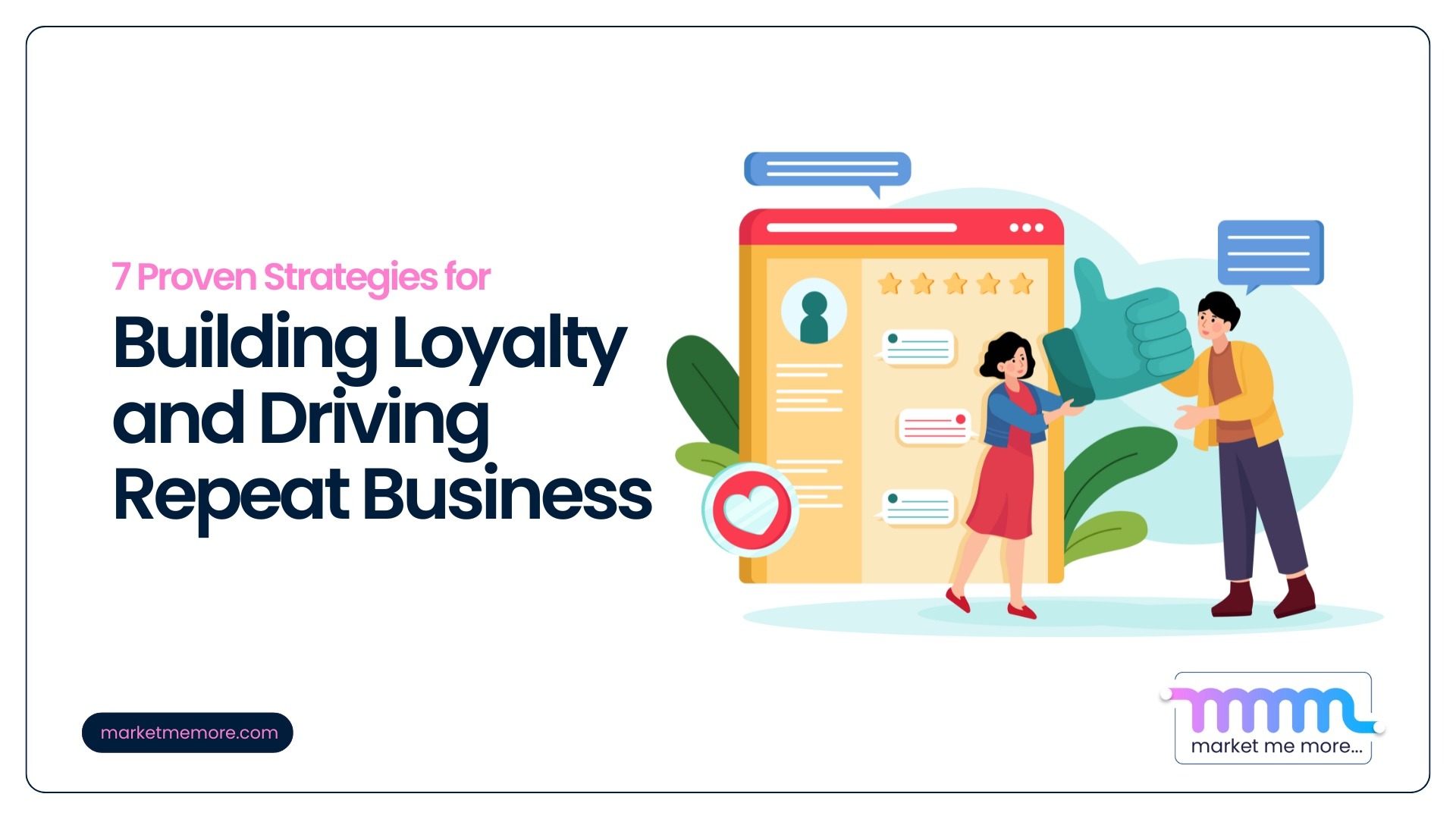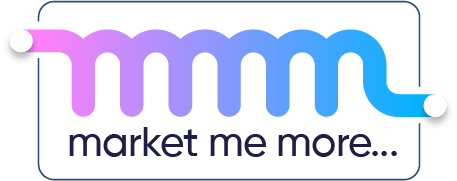7 Proven Customer Retention Strategies for Building Loyalty and Driving Repeat Business

While acquiring new customers is essential for growth, it's the loyal, repeat customers who truly sustain a business over time.
Statistics show that if you just increase customer retention by 5%, you can elevate profits by 25 to 95%. Additionally, repeat customers tend to spend 3X more than one-time shoppers.
We'll explore marketing tactics for building loyalty and driving repeat business. These strategies will help nurture relationships with your customers and encourage them to return repeatedly.
Strategy 1: Deliver Exceptional Customer Service Across All Channels
Imagine a customer, let's call her Emma, who buys a product from your online store. She has questions about its use and reaches out via your website's chat function.
Later, she calls your support line for troubleshooting. Finally, she visits your physical store for a replacement part.
At each touchpoint, Emma is greeted by knowledgeable staff who understands her journey fully.
This seamless experience leaves Emma feeling valued and understood, increasing the likelihood she'll become a repeat customer and recommend your business to others.
In fact, 86% of customers can pay more for a better customer experience.
How do you achieve this level of service?
Start by unifying your channels. Implement a robust Customer Relationship Management (CRM) system that centralizes customer data across all platforms.
This ensures that your team has their full history, whether a customer contacts you via phone, email, social media, or in person.
Next, invest in comprehensive training for your staff. Go beyond scripts and teach active listening skills. Empower your team to make decisions that benefit the customer.
Finally, be proactive in your service approach. Don't wait for customers to come to you with issues. Reach out after a purchase to ensure satisfaction. Send helpful tips or maintenance reminders.

Strategy 2: Implement Personalized Communication Tactics
In an era of information overload, personalized communication is a powerful tool for customer retention.
According to Next in Personalization Report by McKinsey, over 76% of consumers consider personalized communications when evaluating a brand.
However, personalization goes beyond simply addressing customers by name.
It involves understanding their preferences, purchase history, and behavior to create highly relevant and engaging communications. This approach makes customers feel valued and understood.
To implement effective personalized communication tactics, start by:
- Leveraging your customer data. Use your CRM system to collect and analyze information about each customer's interactions with your brand. This data becomes the foundation for crafting tailored messages that resonate with individual customers.
- Segment your customer base based on various criteria such as purchase history, browsing behavior, demographics, and engagement level. This lets you create targeted campaigns that speak directly to the needs and interests of specific customer groups.
- Next, develop a content strategy that aligns with these segments. Create various content types—emails, social media posts, blog articles, and even personalized product recommendations—that address each group's unique interests. For example, a customer who frequently purchases outdoor gear might receive content about new camping equipment or tips for hiking trails.
- Lastly, utilize marketing automation tools to deliver this personalized content at scale, following email marketing best practices. These tools can trigger specific messages based on customer actions or milestones, ensuring that your communications are personalized but also timely and relevant.
Strategy 3: Create and Launch a Compelling Loyalty Program
A well-designed loyalty program can be the secret weapon that keeps customers returning — 75% of consumers say they like a brand more if it has a loyalty program.
How do you implement this strategy?
Start by defining clear objectives for your loyalty program.
Are you aiming to increase purchase frequency, boost average order value, or enhance customer lifetime value? Your goals will shape the structure of your program and the rewards you offer.
Next, consider your customer base. What motivates them? What types of rewards would they find most appealing?
This could range from exclusive products and early access to new releases to experiential rewards like VIP events or personalized services.
When designing your program, make it easy to understand and participate in. Complicated rules or hard-to-reach rewards can discourage engagement.
Imagine you're running an eco-friendly home goods store. Your loyalty program could be designed to reward customers, align with your brand values, and encourage sustainable practices. Here's how it might work:

A program like this incentivizes purchases, educates customers, builds a community, and reinforces the brand's commitment to sustainability.
It turns loyalty to the brand into a broader lifestyle choice, creating deeper, more meaningful connections with customers.
Strategy 4: Engage Customers Proactively After Purchase
Proactive post-purchase engagement is a powerful strategy that can significantly boost customer retention and loyalty.
By reaching out to customers after they've made a purchase, you demonstrate that you value their business beyond the initial sale. This enhances customer satisfaction and opens up future sales and brand advocacy opportunities.
Start by implementing a structured post-purchase communication plan. This should begin immediately after the sale and continue at strategic intervals.
Your initial contact might be a simple thank-you email, followed by more targeted communications based on the customer's purchase and behavior.
Here's a sample timeline for proactive engagement:
- Immediately after purchase: Send an order confirmation with tracking information
- 1-2 days after delivery: Check if the product arrived safely and as expected
- 1 week after delivery: Provide usage tips or ask for initial feedback
- 2-4 weeks after purchase: Request a product review or offer complementary products
- 2-3 months after purchase: Share maintenance tips or offer refills/replenishments
Personalize these touchpoints based on the product purchased and customer data.
For instance, if a customer bought a complex electronic device, your follow-up might include video tutorials or an invitation to a live Q&A session with a product expert.
Pro Tip: Partnering with a reputable email marketing agency can streamline your post-purchase communications, ensuring consistency and quality in every interaction.
Strategy 5: Provide Value-Added Content and Educational Resources
When you offer knowledge and insights beyond your core products or services, you position your brand as a trusted authority and partner in your customers' success.
Start by identifying your customers' pain points, interests, and goals. What challenges do they face? What information would help them use your products more effectively or achieve their objectives?
Use these insights to create a content strategy that addresses these needs. This strategy is a cornerstone of effective content marketing services.
Next, develop a diverse range of content types to cater to different learning preferences:
- Blog posts and articles
- Video tutorials and webinars
- Podcasts
- Infographics
- E-books and whitepapers
- Interactive tools and calculators
- Online courses or workshops
To ensure this content is easily accessible, create a dedicated resource center on your website where customers can find all your educational materials.
Organize content by topic, product, or customer segment to help users quickly find relevant information.
NOTE: Focus on quality over quantity. Your content should provide genuine value, not just thinly veiled sales pitches. Aim to educate, inspire, and empower your customers.
For example, if you sell kitchen appliances, don't just create content about your products — provide recipes, cooking tips, and nutrition and meal planning information.
Utilizing professional content marketing services can enhance the creation and dissemination of value-added content, making it a cornerstone of your customer retention strategy.

Strategy 6: Implement Surprise and Delight Tactics to Exceed Expectations
Many social media marketing companies use surprise and delight tactics to boost engagement. A great example of the "surprise and delight" strategy in action is what the online retailer Zappos is known for.
Zappos occasionally upgrades customers to overnight shipping without prior notice and at no additional cost.
Imagine a customer who orders a pair of shoes with standard shipping, expecting them to arrive within a week. Instead, they receive their order the very next day.
This unexpected upgrade delights the customer, exceeds their expectations, and enhances their perception of the brand, leading to higher customer satisfaction and loyalty.
To implement a strategy like this effectively:
- Start by identifying opportunities throughout the customer journey where you can pleasantly surprise your audience. This could be during onboarding, after a significant milestone, or even during typically frustrating experiences like dealing with a return.
- Use data-driven personalization to inform your efforts, analyzing customer data to understand individual preferences, purchase history, and engagement patterns.
Now, don't limit your surprise and delight tactics to tangible gifts. Sometimes, exceptional service can be the most delightful surprise of all.
Remember, the goal is to create an emotional response. Small, thoughtful gestures often impact more than grand, impersonal ones.
Collaborating with social media marketing companies can amplify your efforts to surprise and delight customers, leveraging their expertise to enhance visibility and engagement.
Strategy 7: Launch Targeted Win-Back Campaigns for Lapsed Customers
Every business faces customer churn. Targeted win-back campaigns recapture these customers' attention who have stopped engaging with your brand or have not made repeat purchases.
A classic example of a targeted win-back campaign comes from the subscription-based streaming service Netflix.
When subscribers cancel their service, Netflix often launches a win-back campaign within a few months.
They send emails highlighting new content additions and improvements tailored to the lapsed subscriber's viewing preferences and previous watch history.
Additionally, Netflix might include a special promotional offer, such as a discounted rate or even a free month, to entice the former subscriber to reconsider their cancellation.
So, how do you implement this for your business?
- Identify Lapsed Customers: Use your CRM to segment customers who haven't purchased within a typical buying cycle or haven’t engaged with your emails or website for an extended period.
- Personalize the Messages: Tailor your messages based on the customer’s previous interactions, purchases, and preferences. Personalization significantly increases the chances of re-engagement by making the customer feel valued and understood.
- Offer Incentives: Include special offers such as discounts, loyalty points, or exclusive access to new products. Incentives can serve as a strong motivator for customers to reconsider your brand.
- Address Past Issues: If previous feedback or data suggests a reason for their departure, acknowledge these issues and communicate what has changed or improved. Customers need to know that their concerns are taken seriously and that your business is committed to providing a better experience.
- Follow-Up: Implement a sequence of follow-up messages. Start with a gentle reminder of the incentive, escalate to a more direct appeal, and offer a last-chance reminder before the offer expires.
- Analyze and Optimize: Lastly, measure the effectiveness of different messages, offers, and timing. Use this data to refine your approach and improve future campaigns.
Effective digital marketing for small business tactics, such as targeted win-back campaigns, plays a crucial role in reconnecting with lapsed customers.
-1.jpg?width=1920&height=1080&name=Inline%20Image%201%20(2)-1.jpg)
Turn Retention into Revenue
The seven strategies we've explored form a powerful toolkit that we call "The Loyalty Loop."
This loop begins with exceptional service and personalized communication, nurturing customers through compelling loyalty programs and proactive engagement.
It's reinforced by valuable content and surprise delights and can recapture those who've strayed.
Each strategy feeds into the next, creating a seamless experience that retains customers and transforms them into passionate brand advocates.
Whether you're looking for digital marketing for small business or enterprise-level solutions, these strategies can be tailored to fit your needs.
Remember, a mere 5% increase in retention can boost profits by up to 95%.
At Market Me More, we can help you implement these retention strategies that resonate with your audience and align with your brand values.
Our team of experts can help you implement personalized communication tactics, set up email marketing automation, and optimize your CRM for maximum engagement.
From crafting compelling marketing email examples to implementing comprehensive retention strategies, Market Me More can help you build your Loyalty Loop.
Contact us today to learn how our tailored digital marketing solutions can boost your business and turn your customers into loyal fans.


